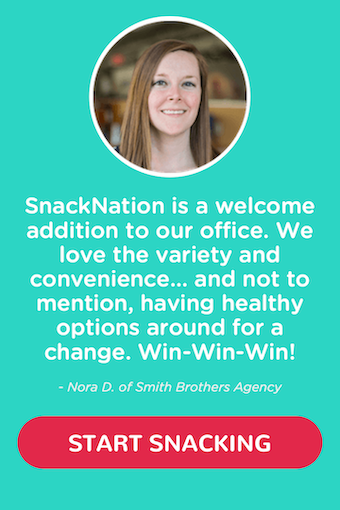
A successful employee engagement survey can empower your company with the feedback that it needs to improve the overall workplace experience.
A good way to think of these surveys is the reverse of the employee performance review process.
- Employee performance reviews help employees know where they stand with the company, giving them insight on their performance and growth potential.
- Employee engagement surveys do something similar for companies, helping them understand how employees feel they’re performing and determine if employees have an interest in helping them grow.
Now that you know what these surveys accomplish, you might be wondering what exactly an employee engagement survey is.
An employee engagement survey is a mechanism for empirically measuring employees’ interest, investment, and commitment to your company and the work that they do.
Specifically, your employee engagement survey will measure values you establish when you define engagement at your company. (Don’t worry! We’ll show you how to define engagement later on.)
Why use these surveys?
Employee engagement creates a foundation for success. Engaged employees are committed and aligned to your mission. They see company success as their personal success.
Surveys may be the only way to truly understand whether or not your employees are engaged. Surveys can determine if you have engagement and also indicate how you might make it stronger or how you might cultivate it if it’s missing.
Are you ready to find out where you stand with your employees?
We know it can be nerve-racking, but we’re here to help. Keep reading to understand how to define engagement at your company and how to manage the process of surveying employees from start to finish.
We even created a turnkey survey you can download. We encourage you to make it your own, developing questions specific to your company and culture.
View Our Employee Engagement Survey Questions Template
Why Is An Employee Engagement Survey Important?
 An employee engagement survey is important because it gives you an overall indication of the “health and wellness” of your company.
An employee engagement survey is important because it gives you an overall indication of the “health and wellness” of your company.
Just as a standard checkup with your physician reveals invisible and unnoticeable indicators of your overall health, an employee engagement survey reveals invisible and unnoticeable indicators of your company’s health.
Everything might look good on the surface, but doing a deep-dive could reveal issues you’ll be glad you caught. For example, you could have lots of high-performing, innately motivated employees who aren’t actually engaged. Finding out when there is low engagement could help you retain your star employees before they hand in their notices.
An employee engagement survey might be especially important if you’re asking yourself any/all the following questions:
- Is employee engagement low at my company?
- What does employee engagement mean?
- Why is employee engagement low at my company?
- Why is employee engagement important?
- How can I improve engagement at my company?
- How can I improve company culture?
- Why is everyone buzzing about employee engagement?
- Why is employee turnaround at my company so high?
- What can I do to improve retention at my company?
An employee engagement survey will return definitive, data-based answers to these questions and probably tons of other questions we haven’t even thought of.
Employee Engagement Survey Timeline and How-Tos

Before the employee engagement survey…
1. Define engagement at your company in measurable terms.
How-to:
Don’t try to write a dictionary definition.
-
- Come up with a list of engagement values. These are the factors you find most important to engagement. They’ll likely be different at every company.
- Write if-then benchmark statements based on these values. As you write these statements, you’ll have to pick the metric you feel most accurately measures your values. These statements won’t be absolute; they’re more like guidelines for your specific company.
Examples:
Engagement value: Participation
-
- If-then benchmark statement: If more than 50% of all employees attend 1+ event per month, then we have ideal participation levels.
Engagement value: Motivational leadership
-
- If-then benchmark statement: If 75% or more of all employees say managers help them do their best work, then we have motivational leadership.
Engagement value: Fulfilling work
-
- If-then benchmark statement: If more than 50% of all employees find their work meaningful, then we are providing fulfilling work opportunities.
Engagement value: Community and collaboration
-
- If-then benchmark statement: If 75% or more of all employees feel supported and valued by their colleagues, then we’re creating an environment of community and collaboration.
Engagement value: Career and skill growth
-
- If-then benchmark statement: If at least 40% of employees feel we’ve helped them develop a new skill in the last year, then we’re providing ample career and skill growth opportunities.
Engagement value: Mission alignment
-
- If-then benchmark statement: If at least 70% of employees feel motivated to pursue our mission, then we have strong mission alignment.
Engagement value: Communication
-
- If-then benchmark statement: If at least 80% of employees understand their performance expectations, then we’re communicating well.
Engagement value: Perceived employee value
-
- If-then benchmark statement: If more than 60% of employees feel supported by us, then we’re making employees feel valued.
Engagement value: Employee commitment
-
- If-then benchmark statement: If at least 200 different employees refer candidates to jobs, then we have strong employee commitment.
Engagement value: Motivation
-
- If-then benchmark statement: If at least 25% of employees rate themselves as “highly motivated” at work, then we have adequately motivated employees.
Engagement value: Support
-
- If-then benchmark statement: If at least 75% of employees feel they have adequate resources to work efficiently, then we’re providing ample process and resource support.
Engagement value: Recognition and feedback
-
- If-then benchmark statement: If over 50% of employees say they feel their efforts are properly appreciated, then our recognition and feedback strategies are working.
Engagement value: Work environment
-
- If-then benchmark statement: If over 50% of employees feel happy coming to the office each day, then we’re providing a thriving work environment
Engagement value: Diversity and inclusion
-
- If-then benchmark statement: If at least 50% of employees feel satisfied with diversity at our company, then our diversity and inclusion initiatives are working.
Engagement value: Customer service alignment
-
- If-then benchmark statement: If at least 75% of employees feel a strong drive to serve our customers, then we have ideal customer service alignment.
Benefits of this approach…
Defining engagement at your company in this way will simplify how you build, analyze, and even act on your survey. (You’ll find out why as you read about each step.)
2. Check the measurability of your if-then benchmark statements.
How-to:
Look at each statement. When you get your survey results, will you truly be able to tell if you’ve met your benchmark?
-
- Measurable benchmark: If at least 50% of employees feel satisfied with diversity at our company, then our diversity and inclusion initiatives are working.
- Immeasurable benchmark: If lots of employees feel satisfied with diversity at our company, then our diversity and inclusion initiatives are working.
3. Consider the data you already have.
Example:
-
- If you use this benchmark: If more than 50% of all employees attend 1+ event per month, then we have ideal participation levels.
- But your event planning team tracks attendance, then you can pull insights from their reports and ask a different question about participation.
4. Ask yourself: Are we prepared and resources enough to act on a survey right now?
How-to:
Get leadership and other stakeholders on board.
Establish a committee to help you act on the feedback you receive.
-
- In fact, you might be able to use your survey to recruit people for your committee.
- Some of your respondents took the survey because they felt obligated to, but others took the survey because they really wanted to, because they’re passionate about engagement in the workplace.
- Ask respondents, right in the survey, if they would be interested in getting involved in an engagement committee.
Find out if you have a budget to put into post-survey engagement initiatives if necessary.
Sending out the employee engagement survey…
1. Establish your rollout timeline.
How-tos:
Consider dovetailing a survey deadline with a major company event or memorable date.
-
- Using a memorable date, such as your founder’s day, will make it easier for employees to remember your deadline.
- If you use an event, you can set up kiosks and computers, or do mobile push notifications to encourage employees to fill in the survey on site.
Select a deadline window.
-
- We recommend giving respondents around 1 week to complete the survey.
- Too-short windows might lead some people to skip taking your survey as they can’t see how they could possibly meet the deadline.
- Too-long windows might lead some people to forget about the deadline because it’s so far out of their mind.
To increase responses, plan a few different survey flights, each with a week-long deadline window. (Each flight starts with the announcement of your survey.)
For example:
-
-
- Flight 1: September 1 – 7
- Flight 2: September 9 – 15
- Flight 3: September 31 – October 6
- Flight 4: October 20 – 26
- Flight 5: November 2 – November 8
-
2. Develop a solid survey communication plan.
Tips:
Plan survey messaging for each channel you can think of.
-
- Manager word of mouth: Ask managers to encourage reports to take the survey.
- Official announcements: Plug the survey before both large and small company events.
- Email. In addition to traditional email blasts, you can also ask leadership to add reminders to their email signatures.
- Slack and other office messaging tools.
- Post the survey in any employee engagement platforms you use
- Office bulletin board.
- Office kitchen or snack station.
3. Offer benefits for participation.
Ideas:
Add social sharing components.
-
- Set up your survey so respondents have the opportunity to share that they took the survey to inspire others to follow suit.
- Share results via your company website or newsletter. Seeing people are weighing in will inspire others to chime in with their opinions
Offer prizes and drawing entries for individual survey completion.
Offer collective benchmark rewards: “If at least 75 take the survey by Thursday, then we’ll cater lunch for everyone.”
Be transparent about how the results will benefit company culture and improve employee engagement. Tell everyone you have a plan and that responses will inform that plan.
After the employee engagement survey…
1. Analyze survey responses.
How to:
-
- Find the if-then benchmark statements you created earlier.
- Tally answers to see if you met each benchmark. (Your employee survey tool likely has features that let you view results by count or percentage.)
Here’s an example:
If-then benchmark statement: If 75% or more of all employees say managers help them do their best work, then we have motivational leadership.
Survey question: I feel that my manager helps me do my best work.
- Strongly agree
- Agree
- Neither agree nor disagree
- Disagree
- Strongly disagree
Analysis:
-
- Add the percentage of respondents who selected “strongly agree” to the percentage of respondents who selected “agree.”
- If your total percentage is 75% or more, then you likely don’t need to take corrective action. (Of course, this refers to 75% of employees who took the survey and not all employees, but you can still use this as an indicator for the whole company.)
- If your total percentage is less than 75%, then move on to step 2.
2. Determine what corrective measures your results point to.
How to:
The structure of your if-then benchmarks should make corrective actions easy to determine.
In the example above, the metric you need to correct is your managers’ ability to help employees do their best work, so you know you might need to do some management training.
Piggyback questions give you insight into your corrective options. Read more about piggyback questions in the next section.
3. Repeat this process.
Tips:
-
- Try sending one big annual survey and several mini pulse surveys throughout the year.
Employee Engagement Survey Questions

General survey development how-tos:
Take your if-then benchmark statement.
Rephrase it as a question or agree/disagree statement.
Example:
- The if-then benchmark statement: If over 50% of employees say they feel their efforts are properly appreciated, then our recognition and feedback strategies are working.
- Turns into the agree/disagree statement: I feel that my efforts are appreciated. [Strongly agree / Agree / Neither agree nor disagree / Disagree /Strongly disagree]
Come up with a few additional survey questions or agree/disagree statements you could use to measure success toward your overall engagement value.
-
- Another agree/disagree statement to measure recognition and feedback might be: My greatest accomplishments are properly recognized.
Add optional piggyback questions to priority questions that measure factors you really want to nail.
-
- These questions dig deeper into a provided response, asking respondents to add more detail about why they agreed or disagreed with a statement or selected a certain answer.
View Our Employee Engagement Survey Questions Template
Engagement Value: Participation
Q1: How many company events do you attend per month?
→ I never attend events
→ 0-3
→ 3-5
→ 5-10
-
- Provide a text box for open-ended feedback
-
- Provide a text box for open-ended feedback
Q2: When I hear about a company training or workshop, I always do my best to attend.
→ Strongly agree
→ Agree
→ Neither agree nor disagree
→ Disagree
→ Strongly disagree
Q3: I enjoy participating in company-sanctioned volunteer events.
→ Strongly agree
→ Agree
→ Neither agree nor disagree
→ Disagree
→ Strongly disagree
Q4: On average, how many meetings do you attend per week?
→ 0
→ 1-3
→ 3-5
→ 5+
Q5: I have quality interactions with my co-workers every day.
→ Strongly agree
→ Agree
→ Neither agree nor disagree
→ Disagree
→ Strongly disagree
Engagement Value: Recognition and Feedback
Q6: I feel that my efforts are appreciated.
→ Strongly agree
→ Agree
→ Neither agree nor disagree
→ Disagree
→ Strongly disagree
Q7: My greatest accomplishments are properly recognized.
→ Strongly agree
→ Agree
→ Neither agree nor disagree
→ Disagree
→ Strongly disagree
Q8: I get plenty of constructive feedback on my performance.
→ Strongly agree
→ Agree
→ Neither agree nor disagree
→ Disagree
→ Strongly disagree
Q9: I understand my job expectations.
→ Strongly agree
→ Agree
→ Neither agree nor disagree
→ Disagree
→ Strongly disagree
Q10: My recent employee review left me feeling empowered.
→ Strongly agree
→ Agree
→ Neither agree nor disagree
→ Disagree
→ Strongly disagree
Engagement Value: Motivation
Q11: How would you rate your motivation level?
→ Highly motivated
→ Motivated
→ Neither motivated or unmotivated
→ Unmotivated
→ Highly unmotivated
Q12: I’m always looking for ways to improve work processes.
→ Strongly agree
→ Agree
→ Neither agree nor disagree
→ Disagree
→ Strongly disagree
Q13: If I spot a problem, I work as hard as possible to solve it.
→ Strongly agree
→ Agree
→ Neither agree nor disagree
→ Disagree
→ Strongly disagree
Q14: I believe the work I do matters to the company.
→ Strongly agree
→ Agree
→ Neither agree nor disagree
→ Disagree
→ Strongly disagree
Q15: I pursue goals outside my regular job responsibilities.
→ Strongly agree
→ Agree
→ Neither agree nor disagree
→ Disagree
→ Strongly disagree
Engagement Value: Work Environment
Q16: I feel happy coming to the office each day.
→ Strongly agree
→ Agree
→ Neither agree nor disagree
→ Disagree
→ Strongly disagree
Q17: My work environment allows me to be productive.
→ Strongly agree
→ Agree
→ Neither agree nor disagree
→ Disagree
→ Strongly disagree
Engagement Value: Mission Alignment
Q18: How motivated are you to help pursue the company mission?
→ Highly motivated
→ Motivated
→ Neither motivated or unmotivated
→ Unmotivated
→ Highly unmotivated
Q19: The company mission fits into my personal values.
→ Strongly agree
→ Agree
→ Neither agree nor disagree
→ Disagree
→ Strongly disagree
Q20: My work contributes to our mission.
→ Strongly agree
→ Agree
→ Neither agree nor disagree
→ Disagree
→ Strongly disagree
Engagement Value: Motivational Leadership
Q21: My manager helps me do my best work.
→ Strongly agree
→ Agree
→ Neither agree nor disagree
→ Disagree
→ Strongly disagree
Q22: Company leadership wants to see me advance within the company.
→ Strongly agree
→ Agree
→ Neither agree nor disagree
→ Disagree
→ Strongly disagree
Q23: Company leadership is doing everything they can to pursue our mission.
→ Strongly agree
→ Agree
→ Neither agree nor disagree
→ Disagree
→ Strongly disagree
Q24: I trust our leadership team.
→ Strongly agree
→ Agree
→ Neither agree nor disagree
→ Disagree
→ Strongly disagree
Q25: I understand what leadership values in employees.
→ Strongly agree
→ Agree
→ Neither agree nor disagree
→ Disagree
→ Strongly disagree
Engagement Value: Fulfilling Work
Q26: I find my work meaningful.
→ Strongly agree
→ Agree
→ Neither agree nor disagree
→ Disagree
→ Strongly disagree
Q27: My friends and family know my work is important to me.
→ Strongly agree
→ Agree
→ Neither agree nor disagree
→ Disagree
→ Strongly disagree
Q28: I could easily list 5 or more benefits of my work.
→ Strongly agree
→ Agree
→ Neither agree nor disagree
→ Disagree
→ Strongly disagree
Engagement Value: Career and Skill Growth
Q29: I’ve developed at least one new skill at work in the past year.
→ Strongly agree
→ Agree
→ Neither agree nor disagree
→ Disagree
→ Strongly disagree
Q30: I understand my career growth potential.
→ Strongly agree
→ Agree
→ Neither agree nor disagree
→ Disagree
→ Strongly disagree
View Our Employee Engagement Survey Questions Template
People Also Ask These Questions About Employee Engagement Surveys
Q: How do I conduct an employee engagement survey in 2025?
- A: You can conduct an employee engagement survey in 2025 by identifying your engagement values and writing questions designed to gauge those values. You can start from scratch or download and adapt some pre-designed questions.
Q: Why is an employee engagement survey important?
- A: An employee engagement survey is important because it helps companies understand and quantify the abstract concept of employee engagement. CEOs might see smiling employees or attendance records as signs of healthy engagement, but visible clues and assumptions make unreliable engagement indicators. A carefully designed employee engagement survey will provide an objective, evidence-based measure of engagement.
Q: How can I create an effective employee engagement survey?
- A: You can create an effective employee engagement survey by first understanding what employee engagement means at your company and then designing your survey questions to measure multiple facets of your engagement definition. Follow this guidance to start creating an effective employee engagement survey today.
Q: How do I measure the success of my employee engagement survey?
- A: You can measure the success of your employee engagement survey by looking at the numbers and data. How many responses did you get? Are your results calling out interesting insights and pointing to clear next steps? Ultimately, an employee engagement survey is successful if it helps you understand how employees feel and provides you with clues about what next steps to take.
Q: Where can I find quality employee engagement survey questions?
- A: You can find quality employee engagement questions and a downloadable survey template in this post. You can copy the questions exactly or use the outlined process to build quality questions specific to your company’s engagement definition and values.
Q: Are employee engagement surveys really anonymous?
- A: Employee engagement surveys that claim to be anonymous should be anonymous. The goal of these surveys is taking an accurate pulse of employee insight—not identifying people who don’t agree with company values. Most survey distribution tools take respondent privacy seriously. If you are told your survey is anonymous, then you can believe it.
Q: What is the first step to sending out an employee engagement survey?
- A: The first step to sending out an employee engagement survey is to define engagement at your company in measurable terms. Only by defining engagement can you create a survey to measure it. You can learn how to define employee engagement at your company in this article.
Q: How can I incentivize my employees to take our survey?
- A: You can incentive employees to take your survey by offering benchmark rewards, such as company-wide lunches, when you hit an overall number of survey responses. You might also consider entering each respondent into a drawing or adding social sharing components to your survey so peers can encourage one another to participate.
Q: What makes a good employee engagement survey question?
- A: A good employee engagement survey question will prompt employees to indicate depths of feeling about certain topics. Good survey questions elicit more than simply a “yes-or-no” response, and they avoid indicating what the preferred answer might be. The primary questions should come with standardized multiple choice responses to keep survey analysis clean.
Q: Why do employee engagement surveys work?
- A: Employee engagement surveys work because they point out strengths or problems that were previously unidentifiable. After companies pinpoint these strengths or problems, the survey can even help them figure out next steps to maximize or correct engagement.
Q: What should I do after I complete my employee engagement survey?
- A: After you complete your employee engagement survey you should get ready to distribute it, analyze the results, and act on any takeaways. You can find guidance for completing all these steps here.







Wow, this is comprehensive — thanks for the hard work that went into this! I think a potential issue at mission-driven organizations (especially B-corps) is that employee engagement happens automatically. There’s an assumption that as long as an employee identifies with the mission the rest takes care of itself. Definitely not true and I’ve seen organizations lose top performers because of that mistake.
Appreciate your response Emily! How would you address this?